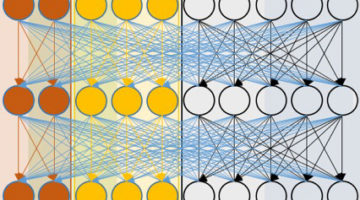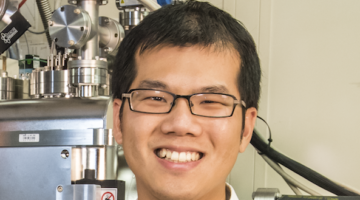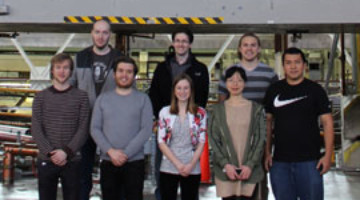Researchers have established a new quantitative model that connects molecular interactions in organic solar-cell materials to device performance. The work suggests a way to quickly identify ideal material mixtures and processing methods, bypassing trial-and-error strategies and minimizing labor-intensive synthesis. Read more »![]()
![]()
ALSNews Vol. 394
May 31, 2018
Respiratory Virus Study Points to Likely Vaccine Target
Respiratory syncytial virus (RSV) causes serious respiratory disease in infants and older adults, but no vaccine is yet available. Researchers have now determined the molecular structures of human antibodies bound to an RSV surface protein, providing a promising route for designing a vaccine effective against a broad range of RSV strains. Read more »![]()
![]()
Scientists Use Machine Learning to Span Scales in Shale
Machine-learning techniques have been used to integrate fine- and large-scale infrared characterizations of shale—sedimentary rocks composed of minerals and organic matter. Understanding shale chemistry at both the nano and mesoscale is relevant to energy production, climate-change mitigation, and sustainable water and land use. Read more »
Will Chueh, Assistant Professor and UEC Chair
For more than 10 years, Will Chueh has been an ALS user. He started coming to the ALS as a grad student using one technique, and now, as an assistant professor at Stanford University, his group uses multiple techniques and multiple user facilities to better understand energy storage materials. Read more »
Meet Leda: Mother of Light
In Greek mythology, Leda is a Spartan queen and mother of the twins Castor and Pollux. In reference to the myth, Leda is also the name of the ALS’s recently delivered insertion device—an in-vacuum undulator. For the next eight months, Leda is taking up residence in the Building 15 high bay, awaiting installation during the January 2019 shutdown. Read more »
ALS Passes the 7000-Protein Milestone
The eight structural biology beamlines at the ALS have now collectively deposited over 7000 proteins into the Protein Data Bank (PDB), a worldwide, open-access repository of protein structures. The 7000th ALS protein (entry no. 6C7C) is an enzyme from Mycobacterium ulcerans (strain Agy99), solved with data from Beamline 5.0.2. Read more »
ALS to Host 6th Diffraction-Limited Storage Ring Workshop
Registration is now open for the 6th International Diffraction-Limited Storage Ring (DLSR) Workshop, which will be hosted by the ALS on October 29-31, 2018. The workshop will address both the technical challenges and the new research opportunities at fourth-generation x-ray facilities enabled by multibend achromat lattices. Plenary presentations and breakout sessions will feature updates on current DLSR projects, accelerator designs, experimental systems, and emerging science opportunities. Read more »
ALS Doctoral Fellowship Applications Due June 30
ALS Doctoral Fellowships in Residence allow early-career researchers to spend a year at the ALS working at the frontier of synchrotron radiation research and helping advance state-of-the-art techniques and applications. Applications will be accepted from June 1–June 30. Read more »
ALS in the News (May 2018)
-
- Ramrod MOF resembles Alhambra mosaic
- Dozens of photographers attend Berkeley Lab’s Physics Photowalk
- Metallic drivers of Alzheimer’s disease
- CFN Scientist Spotlight: Ashley Head brings surface studies out of the realm of physics into chemistry
- Students get schooled in x-rays at the Advanced Light Source
- Argonne scientist wins international award for magnetism research
- X-ray scientists create tiny, super-thin sheets of flowing water that shimmer like soap bubbles







